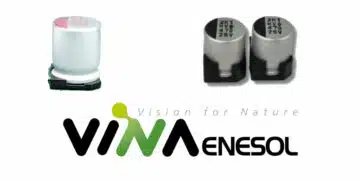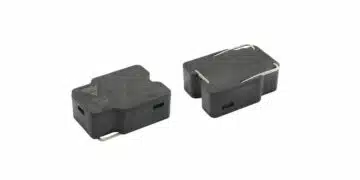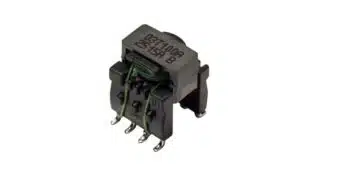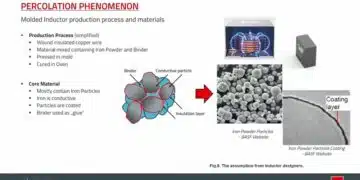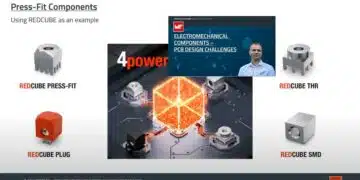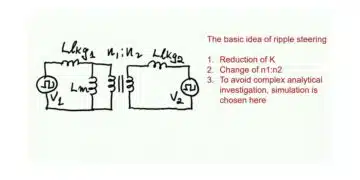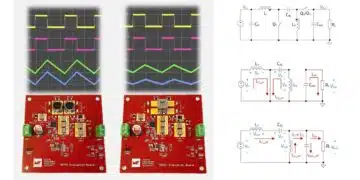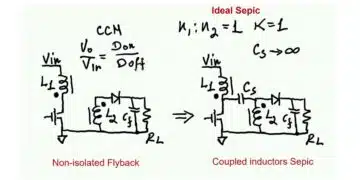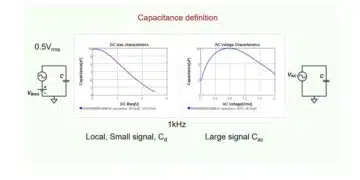It is time to look more closely to parts substitution according to a TTI Market Eye article by Murray Slovick.
With the availability of passive components (along with just about everything else) thrown into total disarray with the global COVID-19 pandemic, orders in certain end-markets such as medical technology and laboratory test equipment have increased dramatically; in other markets such as automotive, demand has slowed radically.
The ability to identify and source parts that closely meet design requirements is critical to reducing product costs and getting products delivered on time and on budget. The application typically dictates the best choice of capacitor type to use in the design – aluminum electrolytic, tantalum, MLCC, etc. Each type of capacitor is well-suited to some fields and ill-suited to others.
When actually designing circuits, it is now necessary to consider availability along with the usual factors taken into account, such as performance characteristics, long term endurance, high reliability, cost and size, when selecting the best capacitor for the job.
If there is a silver lining to the current global situation, faced with uncertain supply for many components, designers are being forced to be flexible in what they design in, considering alternatives perhaps not thought of seriously before.
Finding a replacement part, as with all engineering problems, is a matter of finding the right compromises. For example, there are cases where polymer caps can provide an alternative to MLCC devices – if design parameters allow.
While engineers are naturally reticent to go away from tried-and true solutions, given that it’s impossible to predict availability, the additional time required for changes to the BOM or to the design after the first revision could well be offset by the potential savings in time not spent waiting for component deliveries.
Component substitution can work in multiple directions. Aluminum and tantalum electrolytic capacitors are used in applications which require large capacitance, but miniaturizing these products is difficult and they possess significant problems with self-heating due to ripple currents. However, due to advances in large-capacitance MLCCs, it has become possible to replace the various types of capacitors used in power supply circuits with MLCCs (if it turns out the ones you need are available).
Just remember that anytime you play this game, it is important to exercise caution in usage. Switching to MLCCs provides various benefits, such as small size, but the low equivalent series resistance (ESR) feature of the MLCC can have adverse effects (e.g. oscillation) in power supply circuits.
With that example in mind, let’s see the conditions where polymer capacitors (fully described as “conductive polymer aluminum solid capacitors”) might be a viable alternative for a given MLCC application. Since the decision relies on having a good understanding of both types, let’s look at their similarities and differences.
Similarities:
- Both MLCCs and solid polymer capacitors are available in surface mount packages.
- There is no danger of leakage in either case, so both MLCCs and solid polymer capacitors have minimal risk of fire or explosion. In a polymer cap, the use of solid electrolyte is an advantage over wet electrolytic capacitors. In a wet electrolytic capacitor overheating can cause the electrolyte to evaporate. As it evaporates, pressure builds up within the capacitor causing it to burst or even explode. Solid polymer capacitors do not have such risks; the capacitor either shorts or behaves like an open circuit.
- Stable capacitance versus frequency: polymer capacitors exhibit very similar performance to multilayer ceramics with regard to change in capacitance over a wide frequency range.
- Both MLCCs and polymers have low ESR, and so are far less prone to heating than liquid electrolytics. If your design depends on ESR less than around 10 milliohms, then polymer caps may not be suitable; otherwise, they may be close enough to MLCCs for consideration.
Differences:
- Polymer caps are polarized. A polarized capacitor is a type of capacitor that can only be connected one way in a circuit; thus they can’t be used in circuits where they may experience a reverse-bias or an AC signal. Reverse-bias in polymer caps can cause dielectric breakdown and, hence, a short circuit.
- While both types have similar operating temperature ranges, the change in capacitance with temperature for the two types is somewhat different. Polymer caps show a steadily increasing capacitance with temperature, while ceramics usually have a peak at around room temperature and falloff at higher temperatures. The typical temperature range for ceramic capacitors is -40°C to 125°C. Polymer capacitors, generally speaking, top out at about 125°C.
- MLCCs cannot achieve the same high capacitance as polymer caps for the same given footprint and volume, so multiple MLCCs may be needed to achieve the same value.
- Unlike ceramic capacitors, the maximum voltage of polymer caps is relatively low, so polymers are ruled out if your design requires high voltage parts.
- Polymer caps are not sensitive to the piezoelectric effects that can cause ceramic devices to emit sound as a result of AC voltages across them. When an electric potential, or field, is applied on the surface of an MLCC, it causes an audible deformation at a frequency range from 20Hz to 20kHz; this is known as singing noise.
- If space is limited, all-purpose MLCCs often remain the best option. However, because polymers are available in higher capacitance values, again multiple MLCCs may be needed to achieve the same value. When comparing single polymer capacitors to an equivalent of multiple MLCCs the number of parts needed can make a difference in designing PCBs.
Size Flexibility
Even within a capacitor type – take MLCCs as an example – design flexibility is important. Industries such as telecommunications and consumer electronics have driven component miniaturization, with electronics manufacturers increasingly switching to smaller-size caps. But when availability becomes an issue, a good question to ask is, Do I need to downsize?
To achieve the same results with downsized MLCCs, more of them may have to be placed. In addition, adjusting the PCB layout and placement can result in extra costs, which manifest themselves in higher assembly times and positioning that may run more slowly. Also, new pick-and-place machines may be required. Downsizing can have its shortcomings, also, such as diminished electrical stability or performance. Typically, a larger ceramic capacitor has less capacitance change under the same DC bias voltage compared to smaller ones. So, whenever you are changing your MLCC to a smaller size, you have to check the electrical performance, because it will likely change.
Questions to Keep in Mind
There has never been a more diverse range of capacitor technologies and capabilities for engineers to choose from. Ask yourself: Which capacitor properties are really important for my design? Then, use the tools available to get the right parts at the right time.
You’ll find that authorized distributors can provide you with as much information as possible about the status of parts, in real time. They will also inform you on the impact to delivery of components manufactured in regions of the world affected by COVID-19, as well as a complete list of the most current lead-time trends, to help you ensure as best as possible that the products you need will arrive on time.






